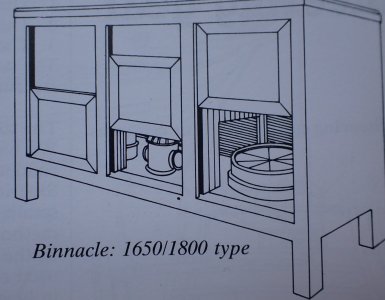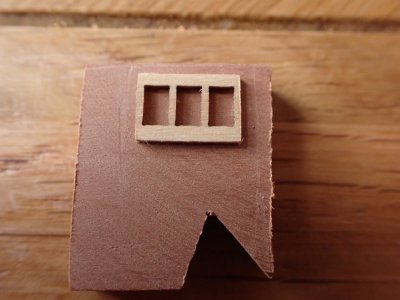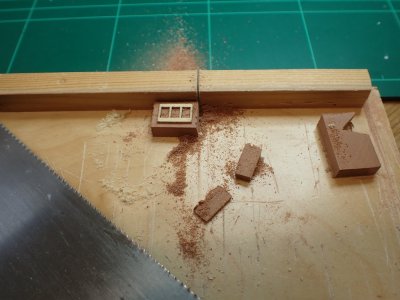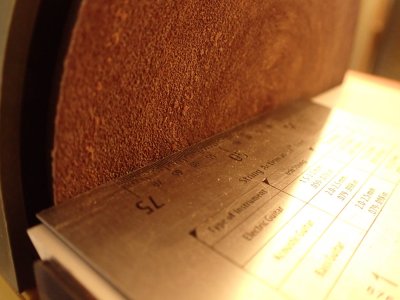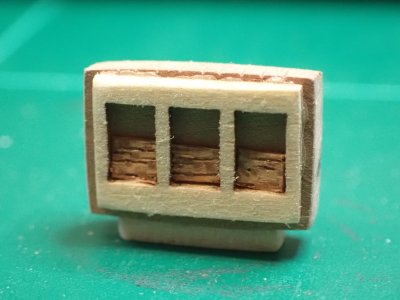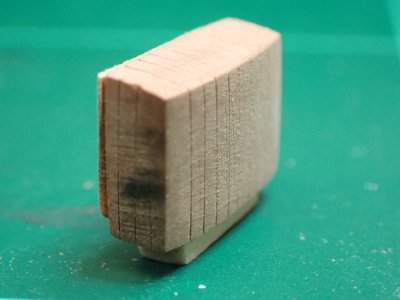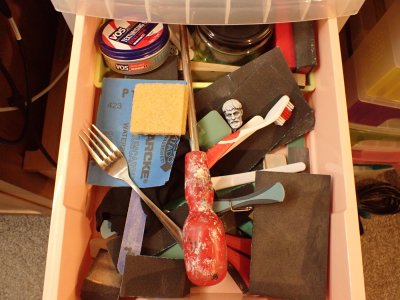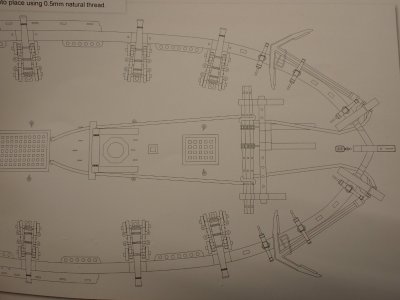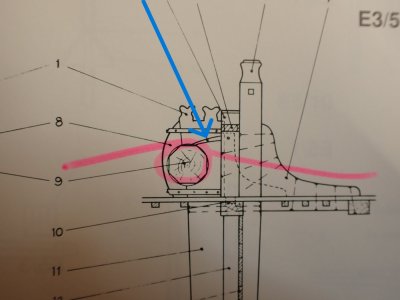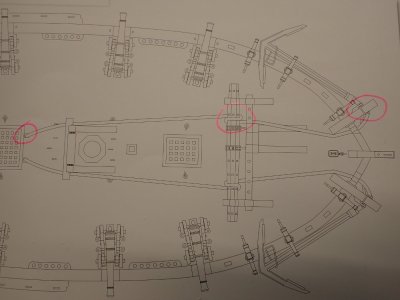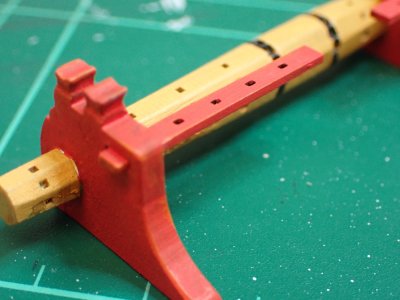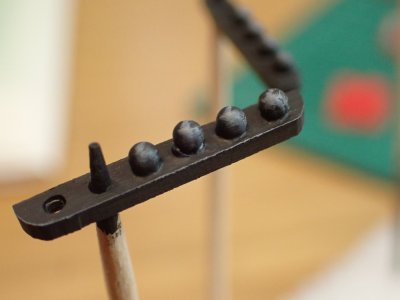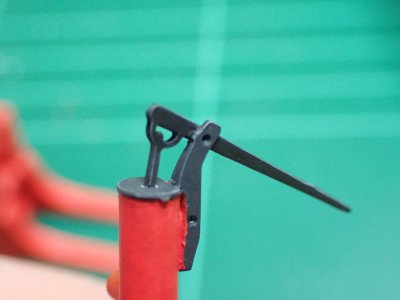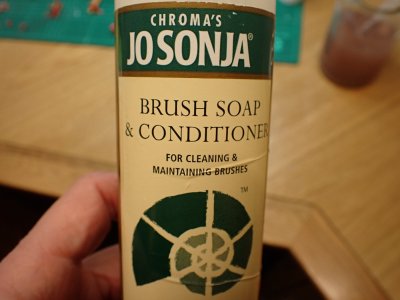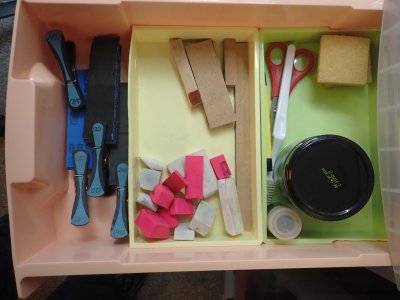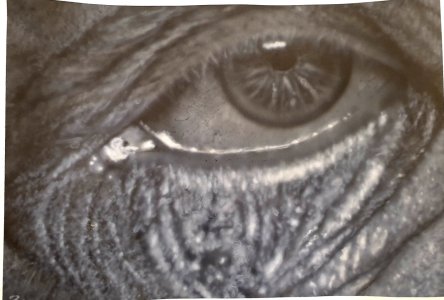I've been painting again today.
View attachment 481765
I've not had much enthusiasm to spare for modelling today due to other distractions and I was mostly was applying that second thin coat so no reason for a photo. However, I've used a technique from figure modelling that you might not have seen before. It's called edge highlighting and that probably tells you most of what you need to know.
View attachment 481766
The idea is to apply a lighter colour to edges which would catch the light on the real thing. When you look at a boat in a harbour in the sunshine, all of the edges shine, even on matt painted surfaces. we see this without noticing and use it to comprehend the volumes of the various objects that make up the boat. As I look around my apartment, I see that shine on the edges of the bookshelves, the hiking pole, my coffee cup. It's so everywhere that normally only artists see it, but take a look and it's there. The problem for modellers is that on a miniature, that effect is lost in the small scale of the object. Mini painters learn to reproduce the effect with paint.
First a lighter shade of the base colour is used along all of the edges, then an even lighter one on the topmost parts and finally a white dot or two on the very highest points. If it's done well it's very subtle almost impossible to see on a photo because it looks so normal but the mini really seems to 'gain volume' when it's in your hand. I don't do it well because I'm not a big fan of subtle.
View attachment 481767
The effect I'm aiming at is something I call 'Grand Opera'. I don't want my models to look like life, I want them LARGER than life. Think of the costumes and scenery at an opera house and you'll get the idea. I use only one layer of a colour which is quite markedly lighter than the base colour; mid grey over 'almost black' or a yellow orange over red.
It's not difficult to do and the effect can be quite dramatic. Often the viewers will know there's something happening to make the model 'pop' like a Viewmaster slide (remember them?) but they won't know what it is.
I don't know whether I can make it work as well over a great big boat model as I could on an armoured knight or a tank or aircraft though. We'll soon find out.
~~~~~~~~~~
View attachment 481764
To get those fine lines right on the edges I use the side of my brush in an almost dry condition, scrubbing off the wetness with paper. That's really hard on the brush and though I use cheap semi-disposable brushes, I do like to make them last as long as possible. I recommend using this or one of the many equivalent products at the end of a painting session. They make the brushes last and make them work better too.
~~~~~~~~~~
And finally, finally...
View attachment 481763
I was bored with that running gag so here's the tidy abrasives drawer. Usually it's only like this at the beginning of a project so this is a bit of a bonus for me.
The pegs hold pre-cut strips of the various grades I use, of a size suitable for the erasers which I use as blocks when sanding curved surfaces. The spare pieces of MDF from laser cut frets are used as sanding sticks and pads for flat surfaces. I make both the eraser and the MDF shapes as required for a particular job and then come to love them and use them over and over again. You'll see 120, 240, and 600 grit. I need 400 rather than 600 which is a bit fine for wood but great on plastic so I have lots leftover to use up
I use good quality wet and dry paper which is capable of being unclogged easily with either a toothbrush, a standard eraser or the special sticky rubber pads (top right) sold for cleaning disc and belt sanders. Most of the paper we throw away isn't blunt, it's just clogged. I get four or five times the use out of my paper by cleaning it, though of course it does wear out eventually as the cutting edges fall off or more rarely become dulled.
The cheap scissors are for cutting the paper and amazingly they still work after at least seven years of this scissor torture.
The big jar is 0000 wire wool for taking the shine off varnish and also for applying wax polish over a varnished surface.
The small jar has a small patch of tights/pantyhose which is excellent for getting that final polish on plastic (It's also the best material ever invented for getting a parade gloss on your shoes, assuming I'm not the only man left in the world who shines leather shoes - I seem to be the only one around here!)
Almost invisible next to the scissors is a fibreglass pencil for cleaning metal surfaces for soldering.
And that, guys and gals is where I'll stop for the night, though I've only just scratched the surface of the subject.









